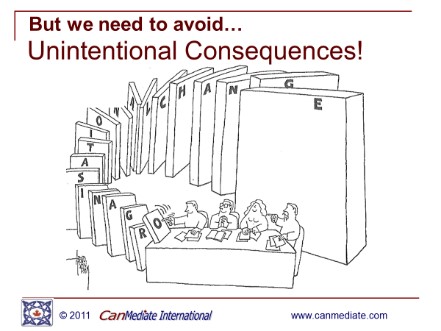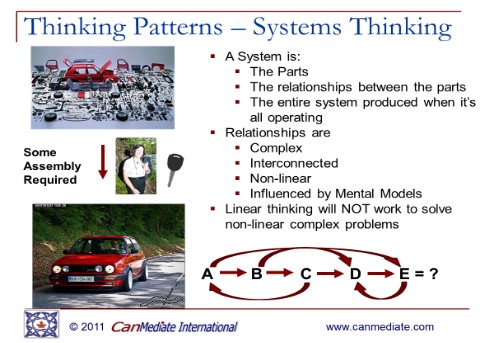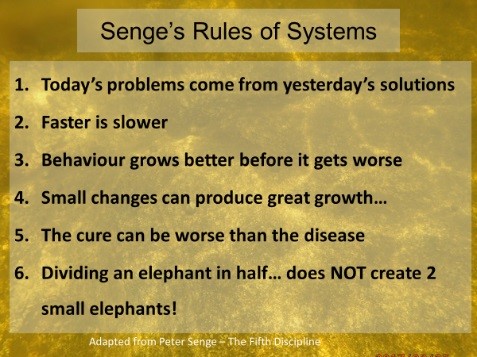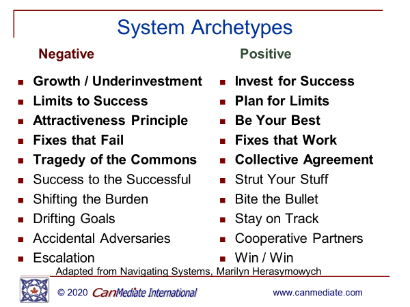We are living through an unprecedented time in history when a tiny virus has brought the world to a virtual standstill. While this has many implications for us individually and personally, it creates extremely challenging times for anyone who runs a business, as the need to decide our best options for survival when the stakes are high means we have some tough decisions to make!

I first realized the severity of the global situation and the impact it was likely to have on my business when, in one 24 hour period, every contract I had underway was either canceled or postponed. Although I have had periods where business was slow, it quickly became apparent that this was far more widespread than anything I had experienced before. Like many others, I found myself reacting to the idea of going weeks or months with little or no income… and feeling that I needed to get this situation under control and fixed – NOW!

Since my normal avenues of business were closed or unavailable due to the pandemic, I found myself heading in the same direction I found that many business colleagues were going – with the immediate perception that the solution was to take the products I have and get them online ASAP. I immediately started to create a “to-do” list of things I would need to sort out in order to get this solution underway.
Does this sound familiar?
What rapid decisions did you make?
It took me a day or two to recognize the trap I was falling into…

Because – what if the choices I am making right now are going to come back to haunt me in the future? There is no crystal ball that can eliminate the risk of making poor decisions but there are some tools that can help!
I consult with organizations to help them develop strategic plans to navigate through conflicts, complaints, toxic organizational cultures to create healthier workplaces. I realized that if I was my own client I would be strongly advocating for a more thorough and constructive decision-making process than what I was using. So, I took a step back and started to look at my situation through a different set of filters – the filters that have helped organizations avoid costly mistakes for many years now. Part of the challenge of determining the best course of action in a business crisis is to have an extremely honest, objective understanding of the business system we have created. This is not about a business process – it’s about the larger ‘system’ that is our business.
Understanding the ‘System’ that IS your business…
In this context, our business ‘system’ is a compilation of all the parts of our business (including you), the relationship between all those parts and what is created when all those parts are ‘working’ together to BE the business. For a small business run by the owner the “System” likely looks like this:

- The owner (and their knowledge, skills, experience, reputation etc.)
- The products / services offered
- The clients and their expectations
- The environment in which the business offers its services
- The mandate under which the business operates (legislation, professional oversight body etc.)
- The risk factors the business encounters
- The reputation of the business and its owner,
- Assets and liabilities
- And likely a few more things…
It’s the difference between focusing on the parts of a car and having a car that is a functioning mode of transportation that can actually get you where you need to go!
In order to objectively understand our business system, we need to be willing to be brutally honest with ourselves about what we do well, what could be improved, what’s not working, what our objectives are, how we define ‘success’, our policies, how we deal with problems / failures and any other factor that contributes to how our ‘business system’ is functioning. These are important factors to understand in order to be able to sort out which are symptoms, and which are root causes that are contributing to our current reality.
Senge’s Rules of Systems
Business and organizational ‘Systems’ are not new – they have been well researched and analyzed to understand the underlying dynamics that affect their ability to be successful. One of the most practical tools I’ve found are Senge’s Rules of Systems. These are a set of practical ‘truisms’ that apply to any system but can be particularly poignant for businesses. There are others in Senge’s list – but these are the ones that resonated with me in this context.
I would invite you to think of examples of these related to your personal situation and your business.

Today’s problems come from yesterday’s solutions. This is one of the most powerful statements and most common situations I have ever encountered. How often do we solve a problem only to discover that at some point in the future, the solutions we chose have now become the source of the problems we’re facing today?
Faster is slower. As we look for ways to solve problems fast, we may miss critical components requiring us to then come back and fix / redo… My grandmother would say this is a good argument for ‘Take the time to do it right the first time – and you won’t have to come back and fix it’.
Behaviour grows better before it gets worse. This is about short, medium and long term solutions. Short term solutions (often in the class of ‘quick fixes’) can temporarily address the situation and bring about an improvement. However short term solutions are rarely if ever sustainable in the medium and long term. This means that as the quick fix reaches the limit of what it can do, the situation will deteriorate. It may actually worsen to the point where things are more critical than they were initially. It’s not unusual for people to react by blaming the quick fix even though, at no point was it designed to be a long term solution. However, once it was in place, as busy business owners we tend to move on to other challenges and fail to monitor how the quick fix is working and assume it’s all good – until it fails…
Small changes can produce great growth. There are often small tweaks that we can make that can have a profound impact. When making decisions, the ultimate goal is to find solutions that will provide the greatest payback for the least amount of effort. This is leverage at work. (Tools to use this are at the end of the article).
The cure can be worse than the disease. Sometimes the solutions we put in place can create more problems than they solve or cost more than the initial problem overall – at that point we need to consider is “Is what I will gain, worth the investment?
Dividing the elephant in half does not create 2 small elephants. Human beings like to dissect problems to understand what we’re facing. It has been well researched that we run the risk of slipping into the trap of assuming, when looking at the dissected issue, that we’re looking at a microcosm of the whole picture. However, looking at one piece of a jigsaw puzzle is not the same thing as looking at the combined results of putting each piece in its place and seeing the whole picture. The same is true for our business – we always need to keep the bigger picture in mind – and that includes all the complex interconnections and relationships that are operating within the system… So, if I make ‘this’ change – What are all the possible outcomes that might arise? Do they take me at least in the direction I want to go? What are all the unintentional consequences that may show up to haunt me?
Which of Senge’s Rules resonate with you? How do they play out in your situation?
Now add in the next layer of ‘behind-the-scenes’ dynamics…
System Patterns – also known as Archetypes (or Traps!)
There is another set of well-researched patterns that operate within business systems and that can trap us into making unwise choices. These patterns are predictable and common but rarely recognized or understood. They also interconnect and one pattern can trigger another so that they are happening simultaneously creating negative pressures within our business that we have not foreseen. When you can’t figure out why something is happening – chances are it’s one or more of these patterns happening in the background!

The statement “Every ‘System’ is perfectly designed to get the results that it’s getting” is a profound summary of how these system dynamics work. If we want to understand the results, we need to understand how dynamics in the system are interacting with each other. To change the results, we need to alter the dynamics contributing to the issue and that means changing the system itself.
There are 12 of these archetypes (patterns) – I am going to focus on the ones I believe are most likely affecting your small business in this context.
Growth and Underinvestment:
When we’re busy we are focused on what we need to get done in the moment and risk not setting time aside to work ON the business. Then when things slow down, we realize all the things we should have had in place to handle a slow down and we panic and start exerting heroic efforts to try to catch up. The energy required to maintain this level of ‘heroic effort’ is not sustainable for more than a short period of time and can leave us exhausted just as we things start to pick up again… at which time we focus on what we need to get done in the moment and the cycle starts all over again…
The solution: Have an ongoing plan that includes business growth and development so that you are continually investing in building capacity.
Limits to Success:
We face resource limits in our business – time, energy, resources, $$, knowledge, etc. As we become more successful, we can hit those limits and our success starts to level off as we realize we don’t have enough time / energy etc. to continue at the pace we’ve been growing.
The Solution: Plan for your limits – know yourself, and your business, recognize where you are on the curve and integrate planning for these limits into all your decisions!
Attractiveness Principle:
Clients are asking you for things that you can do – even if it’s not your strongest area of expertise, and rather than say ‘No’ – especially when business is slow, we take it on. This may take the form of trying to be everything to everybody… or not wanting to let someone down… or ‘faking it till you make it’.
The Solution: Know your strengths, set boundaries and keep yourself within those boundaries.
Fixes that Fail:
We have a problem that needs to be fixed so we look for strategies that we can implement quickly. The challenge is that short term solutions rarely work in the medium or the long term. Yet once the ‘quick fix’ is in place we move on to other issues, and rarely come back to adjust our solution or find other solutions that will work in the longer term. Then when the quick fix runs out of steam and fails – our tendency is to look at it and decide it was a bad solution. This is Senge’s Rule – “Behaviour gets better before it gets worse” in action. It is also likely that we will choose a solution that we’ve tried in the past – even if that solution wasn’t overly effective – not because of its track record but because we’re familiar with it – and maybe, just maybe it will work this time.
The Solution: Pick and implement a ‘quick fix’ in order to take the pressure off but knowing that at the same time you need to be designing a longer term solution. Recognize the risk of ‘unintentional consequences’, plan to mitigate the negative side effects and use the ‘quick fix’ to give you time to get it right in the longer term.
Tragedy of the Commons:
There are always common resources in any system – the photocopier in the office, ‘Mom” in a family, the manager / boss etc. In our current situation the most common resources I see, are the Internet and the videoconferencing platform Zoom. The common resource is available to everyone – and typically everyone feels they are entitled to full use of that resource. The challenge is that there are limits to what the common resource can handle – and when it is overused, it will burn out or break.
The Solution: Plan for how to use the resource taking others needs into consideration. If everyone thinks about their entitlement in conjunction with others entitlement, we are all more likely to enact a reasonable plan for managing the resource so it’s able to handle the load. For example – maybe we don’t need an all day Zoom meeting open – in case people want to connect… we can schedule for lower use time periods, we can avoid streaming high band width videos etc.
Making Wise Decisions That Work!
As we determine how we can adjust our business to be viable in these unprecedented times we need to determine what choices make sense – for us, for the business and most importantly, for our clients. Choosing to make changes while we’re in panic mode may lead us to choose solutions that are not useful or attractive to our client base. What we want to avoid is investing time, energy, limited cash and brain power in developing new products or services that are not saleable to clients. Is it wise to take your business online? I can’t answer that… but it may be worth checking with your clients to see if they will invest in your online products.
Once we determine what our options are, then we want to develop an action plan for how we’re going to move forward. This is where we want to choose the ‘High Leverage’ options we have – the options where we can get the largest payback in the shortest time frame for the least amount of investment.
A Leverage Matrix is a useful tool to figure this out:

- Recreate the Matrix on a large sheet of paper.
- Write all the possible options you have on Post-it Notes
- Assess each option in terms of Low, medium or high investment required (time, effort, $$$) and in terms of low, medium or high level of payback / value.
- Stick the Post-it Note in the appropriate square on the Matrix
- Choose the highest leverage options and start with them.
- Plan a strategy to develop the medium and lower leverage options in the medium to longer term.
- Monitor and evaluate the outcomes
One final trap – Time Delay!

Whenever we initiate a new project it will take time for the full benefit to become apparent and it may take time before we start to see any results at all. If we fail to recognize Time Delay at work, there is a risk we will become impatient when we don’t see immediate results and pull the plug – often just as the results are starting to come in… So, then we try another solution, get impatient and pull the plug on that one too – before it can show results. The result is a vortex of start, get impatient, stop, start over, get impatient, stop… start over that short circuits the good work we’ve done on a project. Give it time… recognize that it’s often hard to see tangible results immediately… don’t negate the value of the project or the potential payback by stopping too soon!
In Summary:
We all make decisions all the time – some will be on point, and some will cause us grief. When we’re in crisis mode we need to recognize the risk of being reactive rather than strategic in how we navigate that crisis. There are many businesses that will navigate this pandemic and come out stronger, wiser and better equipped to serve their customers. The capacity to develop business strategies that build a level of robust flexibility and resilience into our business will help to position us for long term success. Businesses that struggle to adapt and change in this ever changing world will struggle to survive. Give yourself the gift of taking the time to assess what you can (and want) to do, the current environment, whether what you’re considering will be viable when this is over and we have a ‘new normal’ business environment – and most importantly – What are your clients’ needs at THIS point in time. Their needs, capabilities and priorities may be very different now than they were 6 weeks ago…
About Ruth:
Ruth Sirman is an Internationally Certified Mediator (International Mediation Institute), who specializes in helping organizations, and business create healthy thriving workplaces through effective organizational development strategies. She has run 3 successful businesses since 1982. She has a background in environmental biology, chemistry and wildlife toxicology along with being a retired turkey farmer and Mom to 4 amazing young adults and Grandma to 4 incredible grand-kids!
For more information, contact her at info@canmediate.com and check out her consulting website www.canmediate.com and her speakers website at www.ruthsirman.com.
Recent Comments